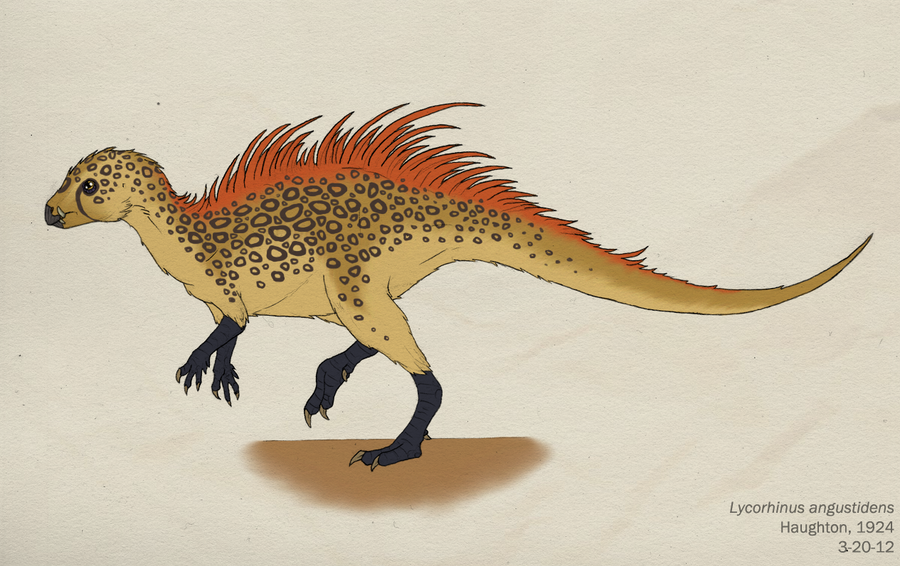[Recent Entries][Archive][Friends][User Info]
| November 5th, 2012 | |
|---|---|
| 06:46 pm [industrialterro] [Link] |
Lycorhinus Ликоринус (λυκος — волк и ρινχος — нос) — растительноядный динозавр юрского периода. Питался ликоринус растительной пищей, хотя на верхней и нижней челюстях у него росли зубы, наподобие крупных клыков, характерных для плотоядных животных. Возможно, клыки служили этому маленькому динозавру средством защиты от хищников, для которых он мог стать легкой добычей. Лишенным зубов клювом ликоринус отщипывал побеги и жевал их тупоконечными зубами. Ликоринус известен с 1924 года. Именно тогда была найдена его левая челюсть, и из-за наличия клыков палеонтологи приняли его за примитивную рептилию с чертами млекопитающего. Но после находки в 1962 году гетеродонтозавра было выявлено их близкое родство, и в итоге ликоринус был отнесен к динозаврам. Lycorhinus is a genus of heterodontosaurid ornithischian dinosaur hailing from the Early Jurassic (Hettangian to Sinemurian ages) strata of the Elliot Formation located in the Cape Province, South Africa. The fossil material consists of dentaries and maxillae, hence the characters mentioned by the name Lycorhinus angustidens that Sidney H. Haughton attributed to the remains in 1924, where the generic name means "wolf snout", as it was at first misidentified as a cynodont, and the specific descriptor means "constricted tooth". The holotype, SAM 3606, consists of a mandible found by Dr M. Ricono. Three other species of Lycorhinus have been named. Lycorhinus parvidens was created by Robert Broom and Lycorhinus tucki by Richard Anthony Thulborn in 1970 renaming Heterodontosaurus tucki, but these have failed to find recognition. Lycorhinus consors, named by Thulborn in 1974, was renamed Abrictosaurus by James Hopson in 1975. Lycorhinus, including the remains described by Gow in 1975 as Lanasaurus, is a small (1.2 metres (47 in) in length) herbivorous dinosaur despite the long canines it sported in its jaws; in view of this typical characteristic L. angustidens is very clearly allied to Heterodontosaurus. Only in 1962 Alfred Walter Crompton recognised it was an ornithischian dinosaur. Thulborn in 1971 created a separate Lycorhinidae but this group was in 1972 equated with Heterodontosauridae by Peter Galton. The type and only species of Lanasaurus is L. scalpridens, described by Christopher Gow in 1975 from the same horizon as Lycorhinus. The generic name is derived from Latin lana, "wool" and Greek saurus, "lizard", and honours Professor Alfred Walter Crompton, nicknamed "Fuzz" because of his woolly hair. The specific name is derived from Latin scalprum, "chisel", and dens, "tooth". It is based on a partial upper jaw bone, the maxilla, holotype BP/1/4244, found in the Upper Elliot Formation of Free State. The teeth show a typical replacement pattern in which during each replacement cycle every third tooth is renewed. Gow himself in 1990 concluded that the holotype of Lanasaurus was actually a specimen of Lycorhinus angustidens. This has been commonly accepted since
Tags: Вымершие рептилии, Юра, авеметатарзалии, архозавроморфы, архозавры, гетеродонтозавры, диапсиды, динозавроморфы, динозавры, птицетазовые |



